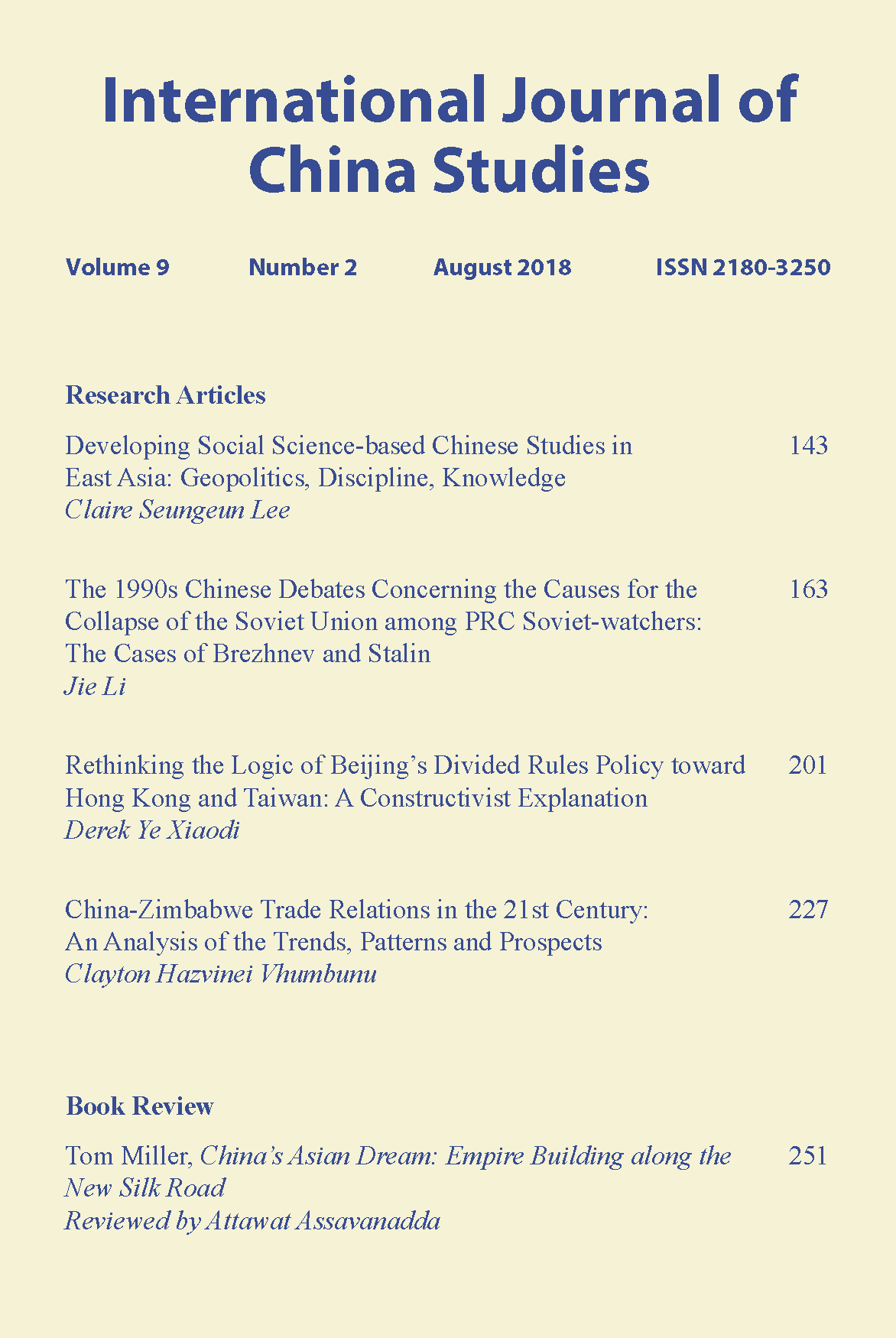Rethinking the Logic of Beijing’s Divided Rules Policy toward Hong Kong and Taiwan: A Constructivist Explanation
Keywords:
Logic of Beijing’s Policy; Beijing–Hong Kong Relations; Crossstrait Relations; Divided Rules Policy 1.Abstract
The dynamic relations between mainland China, Hong Kong and Taiwan over the past few decades have attracted many scholars to explain and predict this interesting phenomenon using various theoretical approaches. Economic integration theory has received the most academic attention, anticipating that economic interdependence will generate a spillover effect on political integration. However, political reality has illustrated the inadequate explanatory power of this theory. Based on this understanding, the present article develops a new analytical framework derived from the revised social constructivism and argues that Beijing’s policy toward Hong Kong and Taiwan is a mixed strategy incorporating three dimensions, namely force, interest and legitimacy; this is labelled the ‘divided rules policy’. These three dimensions are working simultaneously and compatibly with different emphases, depending on Beijing’s assessment and judgement on the specific political situation in Hong Kong and Taiwan. To elaborate Beijing’s policy logic in realpolitik, this article considers two critical turning points that occurred in Hong Kong and Taiwan, the Hong Kong White Paper and 31 Measures, as case studies, and it predicts that the relations of mainland China, Hong Kong and Taiwan will grow tighter than they were before.

